This is a close-up image of Europa
Click on image for full size
NASA
Can there be Life in the Environment of Europa?
At first glance Europa may seem unfriendly to
life as we know it on earth.
Like other icy moons, Europa is small, with no air to breathe, with direct exposure to space and the charged particle environment of Jupiter's magnetosphere. On the surface, the temperature is very very cold.
Nevertheless, the interior of Europa may have been warm enough at one time to contain a liquid layer just under the surface. On Earth, we know that there are some creatures which can survive in an environment of very cold water, such as under the ice of the north pole.
This means that, if the conditions are just right, there may be living creatures on Europa under the icy surface!
You might also be interested in:
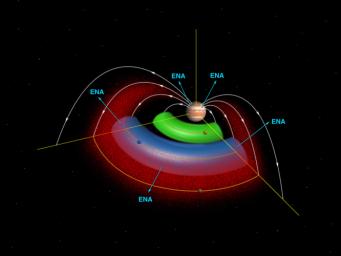
The Galileo mission discovered something amazing! Europa has its own atmosphere, although it is very, very thin. This atmosphere is created when fast moving molecules in Jupiter's magnetosphere hit the
...more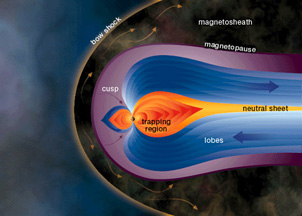
Jupiter's magnetosphere is very special. It is the biggest thing in the entire solar system. Not only is it big enough to hold all of Jupiter's moons, but the sun itself could fit inside. It goes all
...more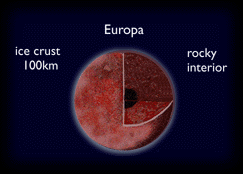
The diagram to the left shows a cutaway of the possible interior structure of Europa. The composition of the icy moons is mostly ice, therefore there is probably a small core of some rocky material buried
...more
Amalthea was discovered by E Barnard in 1872. Of the 17 moons it is the 3rd closest to Jupiter, with a standoff distance of 181,300 km. Amalthea is about the size of a county or small state, and is just
...more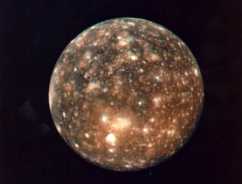
Callisto was first discovered by Galileo in 1610, making it one of the Galilean Satellites. Of the 60 moons it is the 8th closest to Jupiter, with a standoff distance of 1,070,000 km. It is the 2nd largest
...more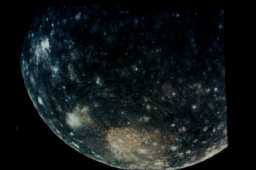
The insides of most of the moons and planets separated while they were forming out of the primitive solar nebula. Measurements by the Galileo spacecraft have been shown that Callisto is the same inside
...more
Many examples of the differing types of surface are shown in this image. In the foreground is a huge impact crater, which extends for almost an entire hemisphere on the surface. This crater may be compared
...more














